In eCommerce marketing, it’s easy to think of your Shopify platform as the finish line for your campaigns. The place that you drive customers towards in the hopes of winning a purchase.
While that’s part of the picture, your customers’ journeys usually aren’t a straight line — and they shouldn’t end after their first purchase.
If you support your Shopify with the right strategy and integrations, it is a treasure trove of information to improve your outreach and engage more effectively with your customers.
Let’s take a look at how it can help you draw prospects back to your store, keep them engaged with added value after a sale, and plan when and how to re-engage them down the road.
Retargeting with intent
When you reach out to someone who has visited your site, the difference between being effective and intrusive comes down to understanding their intent.
If a prospect is still trying to learn about your business, a generic retargeting ad with random products likely won’t make an impact. But connecting them with a blog post highlighting your story and USPs might entice them back to your site. If a visitor is comparison shopping, showing them the relevant items — and sales! — is more likely to grab their attention.
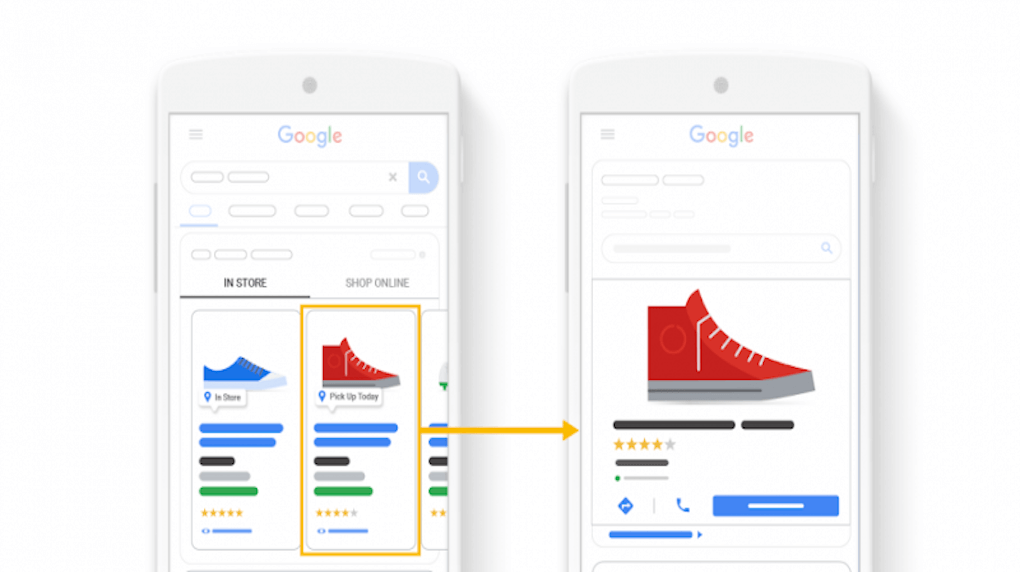
The more insight you have into what they were looking for on your site and where they faltered, the more value you can provide with your retargeting campaigns.
Start with cart abandonment
In an eCommerce store, the first place for this segmentation is usually the point of purchase. It’s a quick and easy way of dividing visitors: customers who purchased something vs. prospects who browsed but didn’t complete a sale.
Focusing on this cart abandonment is a good start, and Shopify has some built-in tools that can help.
If a potential customer provides an email during checkout or uses their profile in the Shop app, you can take advantage of Shopify’s built-in abandonment notifications. Those will automatically send a follow-up email to customers who have abandoned their cart after a specified amount of time.
Shopify even provides some simple customization options:
- Editing the email to fit your brand and voice
- Adding product links
- Including incentives to return like free shipping or a discount coupon
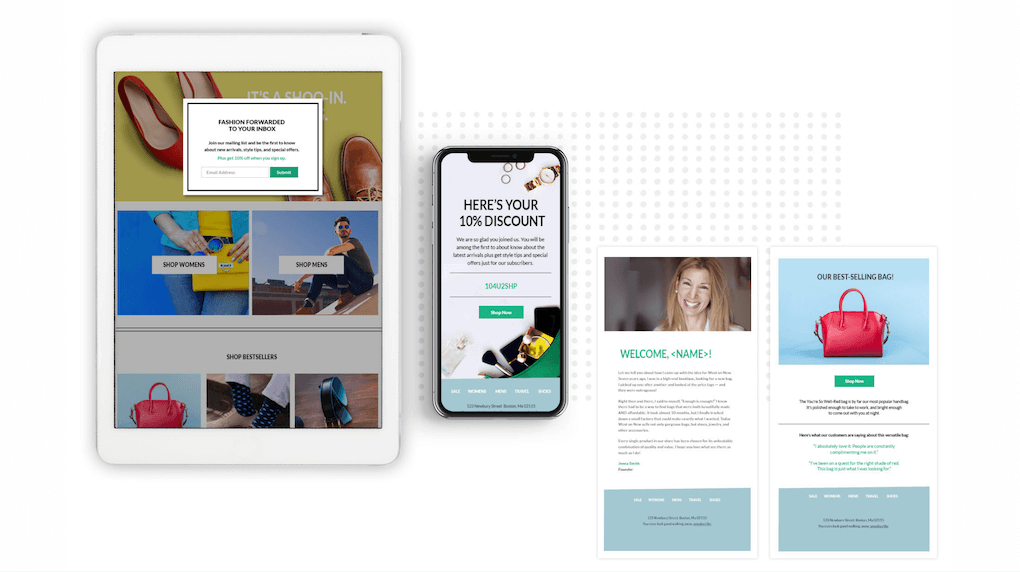
It’s a basic but highly effective way to coax visitors back for a sale.
The problem is that 95% of the people who browse your site won’t complete a purchase, and cart abandonment alone doesn’t tell you why they’re dropping off.
Grow to process abandonment
This is where you’ll benefit from a focus on process abandonment. Before you pursue would-be customers, you should understand where they’re struggling throughout their journey on your site.
Well before a prospective customer hits the checkout, you’ll likely have cookies on them that provide enough information to take action. But to use that information properly, you need to move beyond a one-size-fits-all approach.
Refine your store’s user journey
Start by asking how well you can evaluate customers’ intent. If they’re bouncing from your home page, for example, you don’t know enough to effectively retarget them — yet.
But you do know that something on your main page needs to be addressed. Perhaps navigating to your products should be easier, or you need a landing page that fits the campaign that brought them to your store.
This doesn’t have to be guesswork. Integrations like Hotjar help you better understand exactly what’s happening on each page with additional tools that track how visitors interact with your site.
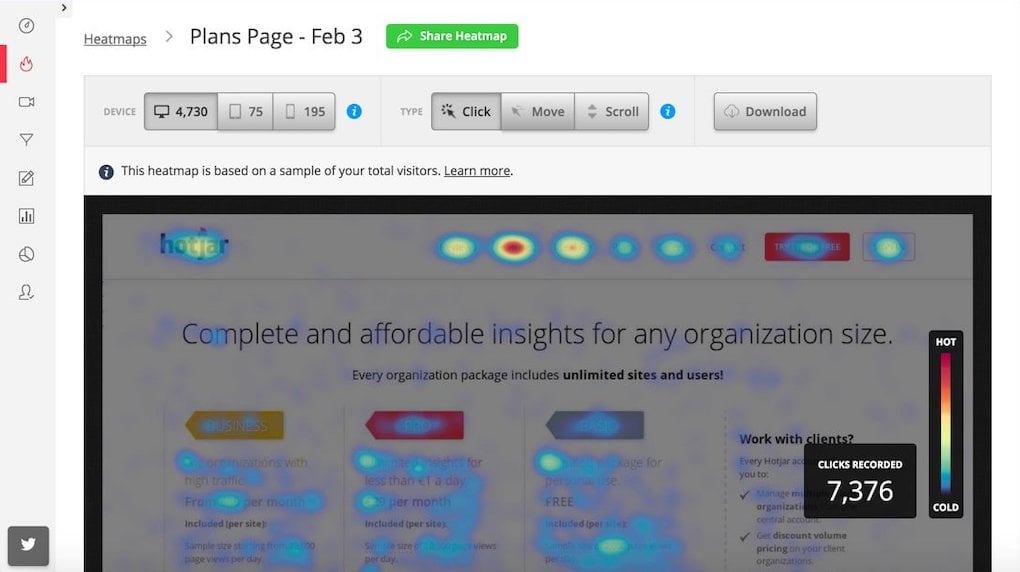
Worried that a particular CTA is underperforming? Use heat maps and session recordings to see exactly which elements of each page are drawing user attention (and their clicks). Or, introduce a post-purchase survey to get insights straight from your customers. Did something almost stop their purchase? Did they encounter any challenges on the way to the checkout? The more information you have, the easier it becomes to find and fix points of friction in your funnel.
Once visitors are spending enough time to show clear intent, you can start re-engaging with a cookie-based approach.
Minimize lost sales with cookie-based retargeting
Whether you’re using Shopify’s built-in tracking or have added your own, cookie-based data will likely be your first tool for personalizing engagement. Get a visitor clicking around on your site, and Shopify can help you understand what they’re looking at, what they want, and how to reach out after they’ve left.
Dynamic shopping ads are a great start. Done right, these campaigns tend to pay for themselves with remarkable ROAS. You can choose the exact point at which to start retargeting a visitor, populate ads with products related to what they’ve clicked on, and even expand to lookalike prospects while building your audience.
This approach isn’t limited to prospects who have yet to make a purchase. Remarketing to returning customers based on their shopping history can reinforce their bond with your brand and keep you top-of-mind when they’re debating another purchase.
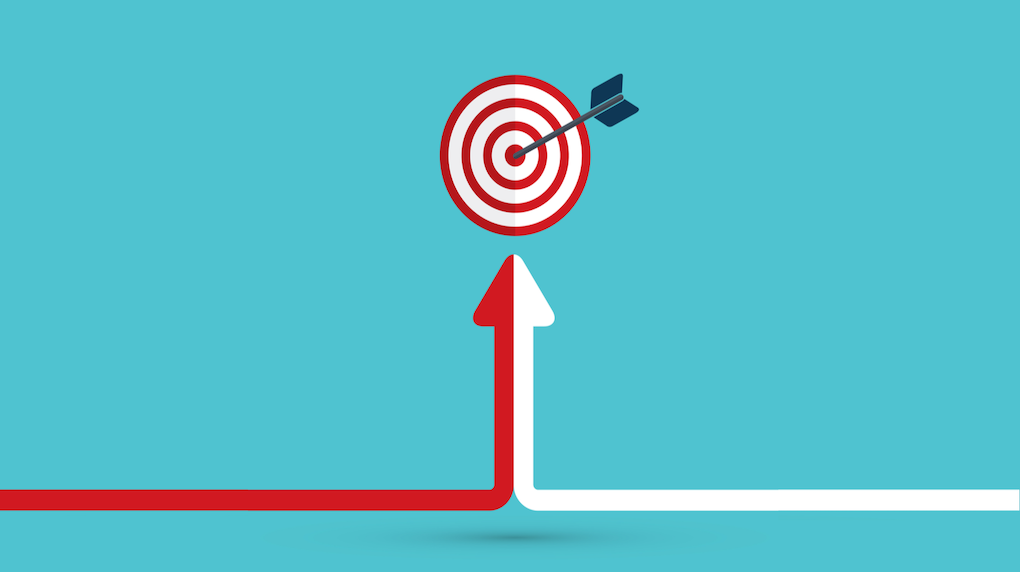
The best part is that these approaches aren’t mutually exclusive. With Google dynamic remarketing, for example, you can implement multiple iterations of your campaigns that target different lists of users. Once you better understand the behaviors on your site, you can start customizing your audiences and content, but Google’s default lists provide some standard segments to get you started.
Regardless of your audience, studies show that the vast majority of consumers prefer brands who personalize their approach, so you should start building that relationship as soon as possible.
Use Google and Facebook for the right ads at the right time
The most effective dynamic campaigns will usually incorporate a one-two punch of Google Ads and Facebook/Instagram.
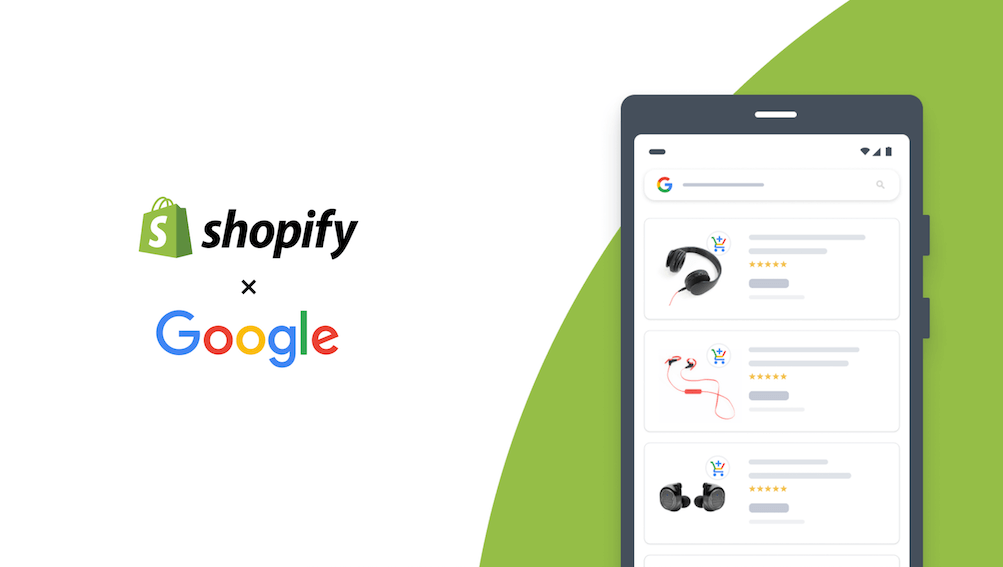
Combining the reach of Google Ads — which should only get easier to integrate as their Shopify partnership expands — with the image-friendly mobile dominance of the Facebook audience network lets you reach a huge audience that will convert at a high rate.
As a showcase for your products, dynamic ad carousels on Facebook are hard to beat. With the option to adjust to the content a visitor has viewed, products they’ve added to their cart, or previous purchases they’ve made, you can tailor these ads to a visitor’s intent, as well as where they’ve been in your store.
Facebook has even added video support for dynamic ads. Used properly, it can help you grab attention and stand out in a crowded social media feed. Once you’ve built out your content and triggers, Facebook can incorporate both static and video ads without active adjustments on your end.
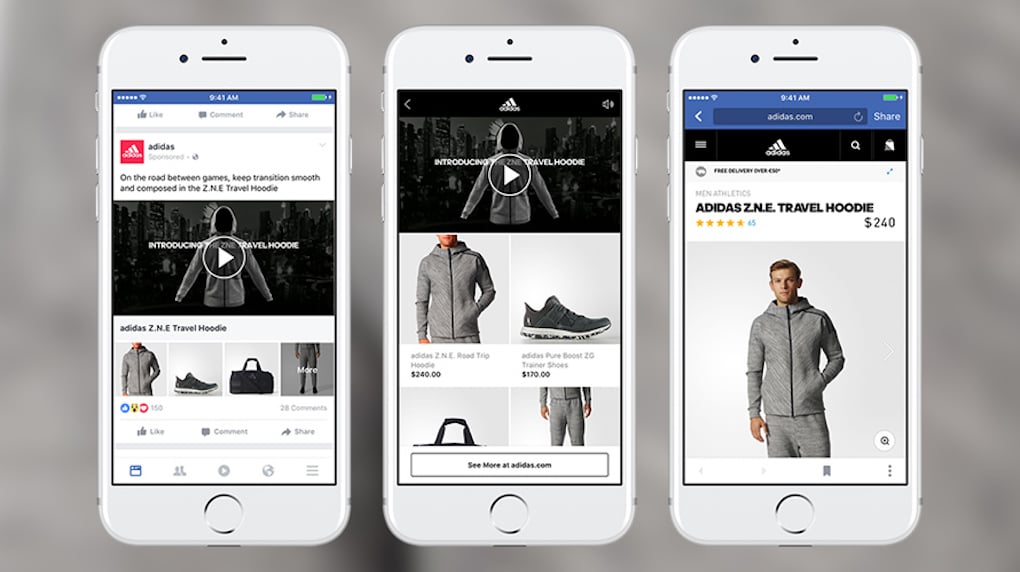
When building these ads, it’s important to use your Shopify for an informed look at when prospects dropped off. Were they distracted while browsing? Maybe a reminder is all they need. Did they exit the process after seeing your shipping cost? Offer them a discount. Are they comparison shopping? Highlight your deals.
This is also your opportunity to incorporate ad sets into your campaigns. Based on your lists, both platforms will let you create groups of multiple ads for different segments. This can help you keep prospects engaged with rotating formats, rather than endlessly repeating a single retargeting ad. While the content and campaign are still tailored to a prospect’s behavior, this gives you added flexibility to keep things fresh.
This will drive ROI and lower the cost of acquiring a customer as you win prospects back.
Expanding to email campaigns
As the other elements of your user journey fall into place, work to secure visitors’ emails — with a profile in the Shop app and Shop Pay, this is more straightforward than ever.
Next, you can begin to expand your email campaigns. For moving beyond Shopify’s built-in options, it’s hard to beat Klaviyo. With native Shopify integration and extensive customization, it provides the tools for an effective outreach fed directly by data from your Shopify.
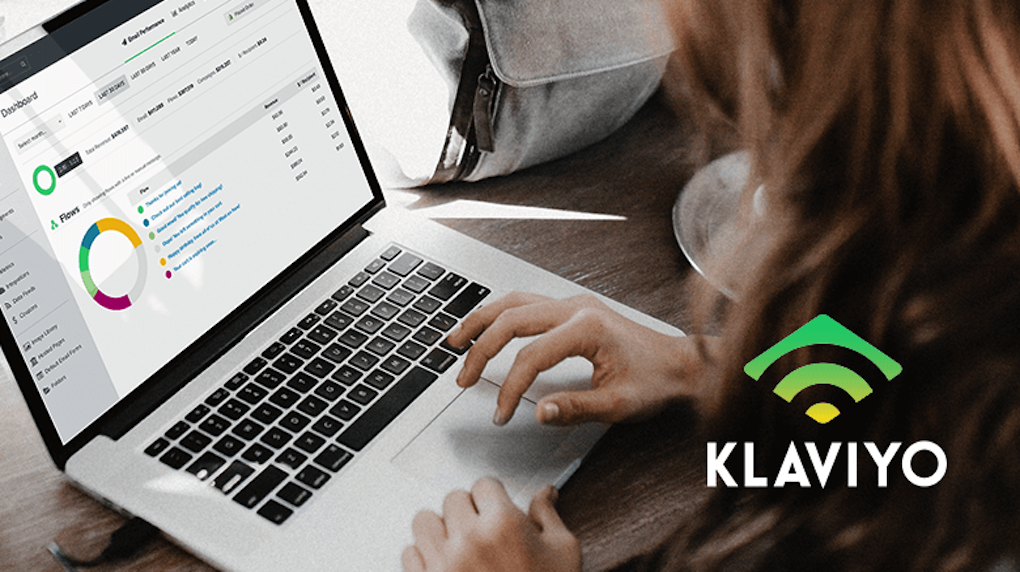
Klaviyo will let you build email flows with custom triggers and conditional splits, all driven by the information you have about a visitor. Klaviyo is proud of their segmentation engine, and with good reason — it can help you get incredibly specific with your customer outreach using modifiers and unlimited custom attributes. That means targeting based on events, profile properties, windows of time, and more. Or different combinations of those attributes.
It’s the perfect way to further refine your customer engagement. Distinguishing between customers who bought an item during a sale, or seasonally, or after a specific promotional callout, say. Or segmenting based on average order value to identify your high value customers — and incentivize them accordingly.
Klaviyo’s library of templates — both for emails themselves and for email flows — also ensures you have a place to start once you’ve added the integration. There are plenty of options while you acclimatize to the platform, or to inspire future, customized campaigns.
This radically increases your options for intent-based engagement and personalization.
Find your email flows
You have your abandonment email, but why not expand it to a full flow? Start with a general reminder, then after more time has passed without a purchase, follow up with a troubleshooting email, and follow up with an incentive to return if that still hasn’t won a sale.
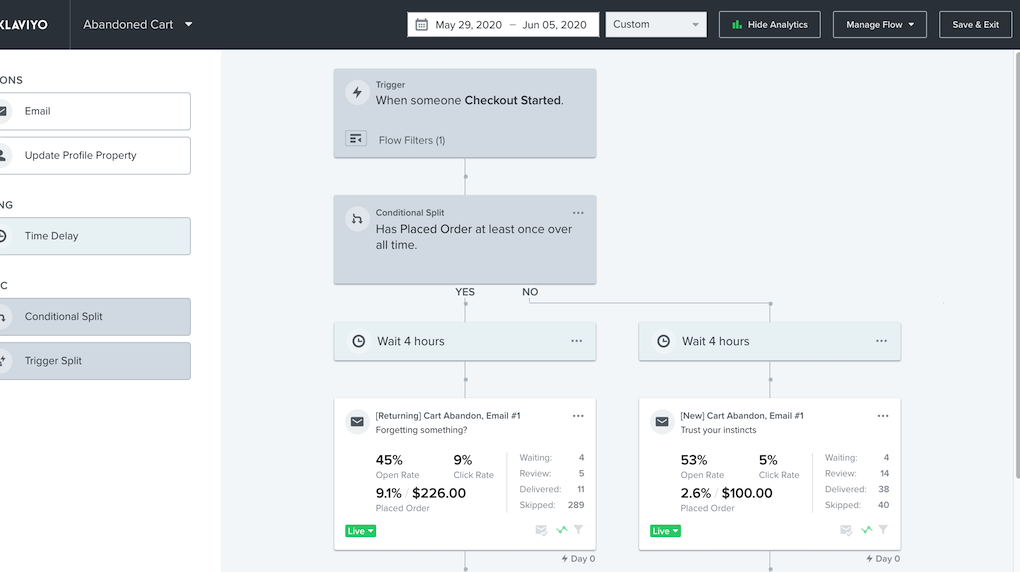
Or, try a welcome series when a new customer submits their email to start building a relationship right after a sale. A regular cadence of newsletters with updates on events and sales can do the same. As with display ads, you can even use a customer’s shopping history to populate these emails with relevant products and content.
Make sure you’re taking advantage of Shopify and Klaviyo’s seamless information exchange. With an understanding of a customer’s shopping habits, you can identify opportunities for upsell or winback campaigns. If it’s been three weeks since they purchased a month’s worth of a product, that can trigger a reminder email. Or, if they buy groceries every two weeks but have been MIA for five, you may need to win them back from a competitor.
Whatever you use, Klaviyo will provide a comprehensive set of data and benchmarks to evaluate when these emails are working as intended, and when you need to adjust. You can learn how much revenue they generate, how many customers they win back, and how much they’re spending.
Working together to win
Using any one of these approaches can help your Shopify store. Although it takes time and effort upfront, weaving them together can radically boost your ability to win over visitors and nurture customers.
For more Shopify insights, read eCommerce evolution: Shopify partners with Google and cryptocurrency payment.